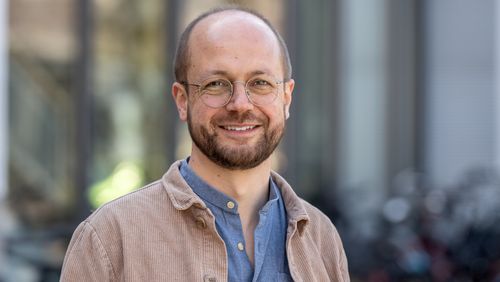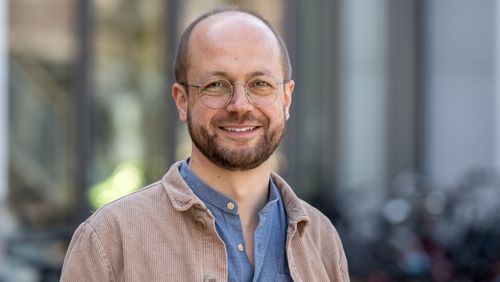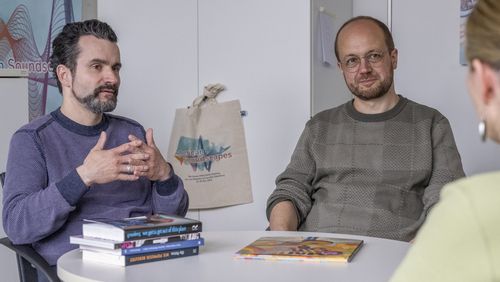History is not only something you read about; it can also be heard and felt. Together with her team, musicologist Anna Langenbruch researches how music history is presented on stage.
Wolfgang Amadeus Mozart as the rock star of classical music – many people have this image in their heads. But Mozart’s superstar status is a relatively new phenomenon – stemming primarily from Peter Shaffer’s play “Amadeus“ and Miloš Forman’s film of the same name from 1984. “This shows how much theatre productions can influence our perception of historical figures,“ Dr. Anna Langenbruch says.
It is this unusual approach to historiography that Langenbruch and her research group “Music History on Stage“ are studying at the university’s Music Department. Their research covers everything from plays featuring music to musicals and operas about musicians or events in the history of music. Works such as “Les trois ages de l’opéra”, an opera that dates back to 1778 about the history of French opera, as well as very recent productions such as Marina Abramović’s “7 Deaths of Maria Callas“, which only came out this year (2020).
Langenbruch’s team is the first to conduct comprehensive scholarly research on historiographical music theatre. The team’s objective is to study it as an independent historiographical genre. After all, music history in theatre functions differently to music history in book form. “Our knowledge about personalities or events in music history is often based on contemporary depictions such as in films or on stage. In these formats, historiography becomes something that we can listen to, see and feel,“ Langenbruch says. Such “audio-images“ are all the more interesting when they relate to music history, she notes.
A database unique in the world
A cornerstone of her research is an extensive database – the only one in the world that brings together works of historiographical music theatre from the eighteenth to the twenty-first century and makes them accessible for further research. Langenbruch laid the foundations for the project when she was a research assistant at the Music Department, before becoming a Fellow in the German Research Foundation’s renowned Emmy Noether Programme in 2016. With the funding from the programme she then set up her research group, which currently has seven members.
Since then she and her colleagues have continued to work diligently on the database – it now contains information on nearly a thousand productions, gathered from archives, libraries and digital collections. It provides information on themes, authors, genres, dates and locations of productions as well as related sources. Painstaking detective work is often needed to secure this knowledge, because scripts and other original sources can be hard to track down.
The stage representation of historical figures changes
Using the data, the researchers can determine, for example, whether and how a musician has been “canonized“, in other words, accepted into the ranks of the “great artists“ and idolized. Historiographical music theatre certainly has the power to do this, says Daniel Samaga, a doctoral student in Langenbruch’s research group. The music historian is working on so-called “authentication strategies“ in productions about Mozart – in other words, he is studying how historical credibility is communicated to the viewer. His analysis of the productions also shows how much the theatrical portrayal of a historical figure can change over time. “Here we clearly see society’s influence on this form of historiography,“ he emphasizes.
Whereas in the nineteenth century Mozart was portrayed as an introverted artist, a musical comedy from 1925 saw him seducing women from all walks of life. With Sylvester Levay’s 1999 musical “Mozart!“ the transformation to rebel was complete: Mozart defies his controlling father and attempts to escape the constrictive corset of his time. The musical uses contemporary rock and pop music for its songs and features only brief recordings of Mozart’s music.
A further focus of the junior research group is to apply ethnographic methods to the study of contemporary productions. One area of research here is how particular gender roles or stereotypes – for example Marlene Dietrich as femme fatale – developed. To gain insights into this process the researchers watch rehearsals and performances and conduct interviews with directors and performers.
“Historiography becomes a choir of voices“
A special feature of historiographical music theatre that can be observed in all the research group’s projects is that it makes it possible to study how people interpret history and argue over it. Not only does it shed light on the views and attitudes of those directly involved in the productions, both on and back stage, but also on those of audiences and critics. They, too, discuss historical content and correct, supplement or comment on it accordingly, as Langenbruch’s research has shown. “In this way historiography becomes a choir of voices,“ the researcher says. And the music itself becomes an intermediary of history. “Compositions are performed centuries after they were written, and in the process, they are rearranged to cater to shifts in listening habits.“
Thus, the creative, artistic approach of historiographical music theatre has just as powerful an influence on historiography as other forms – and all of these forms should be taken into account, Langenbruch continues. “Because our relationship to history partly determines our self-perception, it influences how we see the world, and this is something we discuss with others. That has a direct impact on our lives today.”

![[Translate to English:] [Translate to English:]](/fileadmin/_processed/f/a/csm_Anna_Langenbruch_Einblicke_de0a2aa37a.jpg)


